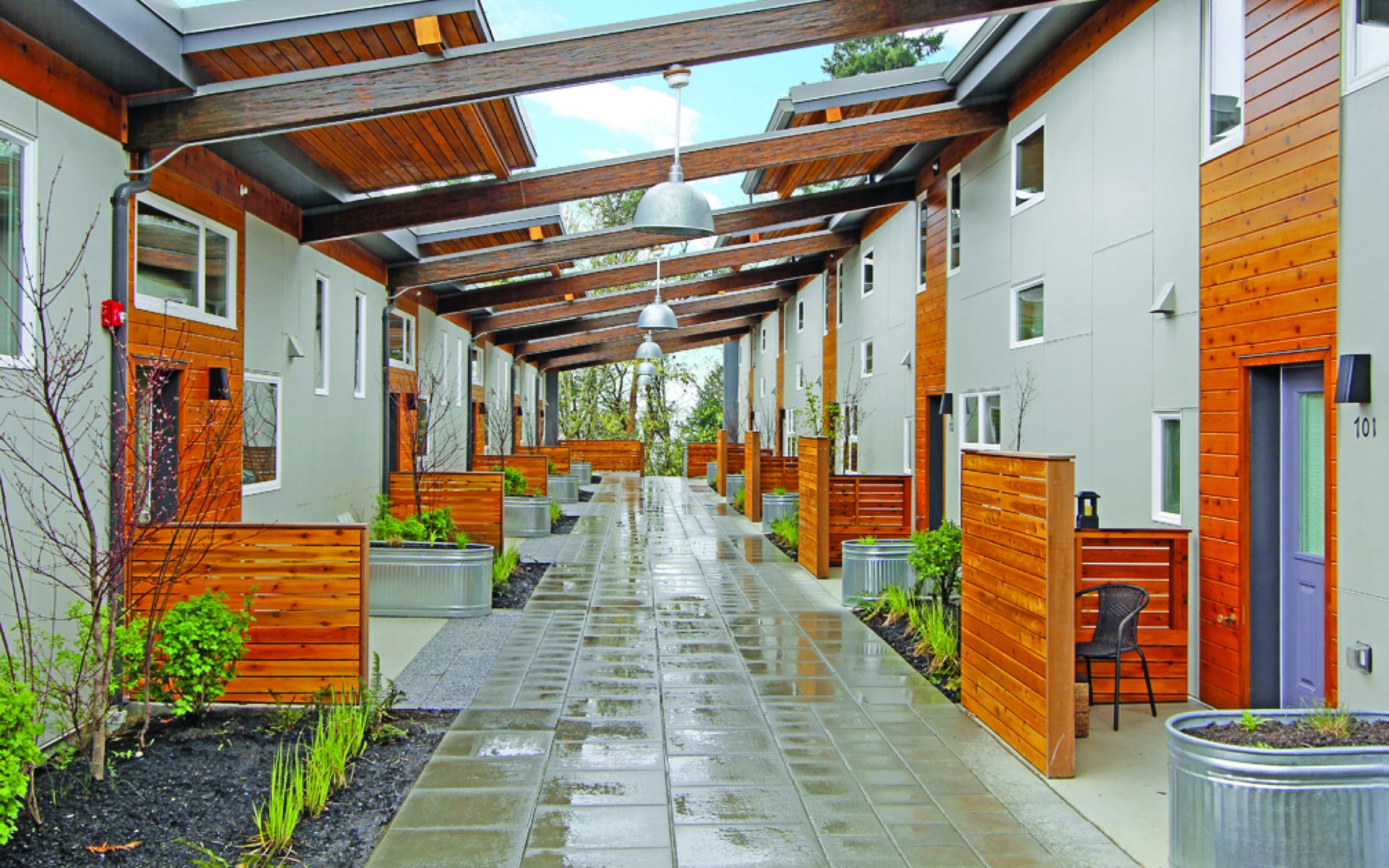Overcrowding and lack of housing heighten the dangers posed by COVID-19.
The COVID-19 pandemic has reached Indian Country, with a reported 17,089 cases as of June 20, 2020, according to Indian Health Services. That’s more cases than in many nations, and an ongoing housing crisis—with multiple families often sharing one roof—is fanning the flames of an already highly contagious virus, laying bare the impact housing has on our health.
Here in Indian Country, it’s not uncommon to see 18 or more people living in a single 900 square-foot-house—a size that, in what is now known as America, more typically provides shelter for a family of four. For American Indians, homelessness is characterized by overcrowding, not individuals living on the streets. Our indigenous values impel us to care for one another under the same roof, regardless of whether we have ample space. According to a study from the Housing Assistance Council (HAC), approximately 9 percent of native populations live with overcrowding, compared with the national average of 3 percent. The Department of Housing and Urban Development (HUD) has found that Indian Country faces a deficit of 68,000 housing units per year. The real need is likely triple that.
Insufficient access to capital is one of the underlying causes of these problems. The Indian Housing Block Grant—one of the key programs under the Native American Housing Assistance and Self Determination Act—has received mostly level funding since its implementation in 1998. Had it kept pace with inflation, the grant program would have already received nearly $1 billion. At current levels, tribal nations’ purchasing power is less than it was 20 years ago. This diminished budget allows for the development of only around 1,000 new units per year—far below the 68,000 HUD has deemed necessary.
While overcrowding and a shortage of affordable housing are not new problems, they have taken on special urgency since the start of the pandemic. Not only does overcrowding make physical distancing, impossible. Native American populations have disproportionate levels of underlying conditions, like heart disease and diabetes, making us particularly susceptible to complications from COVID-19.
Tribal governments can no longer afford to tolerate substandard housing that deteriorates quickly. Or worse, emergency shelters that were never meant to be housing at all. Constructing sustainable, long-term housing in Indian Country is an investment worth making. Now is the time for tribal governments and those of us from the architecture and design community to come together and act. In March, the federal government passed its $2.2 trillion coronavirus stimulus package, which allocated $8 billion to tribal governments. Of that, $300 million has been earmarked for federal Indian housing programs. This funding coupled with lessons learned from recent success stories offers a way forward. It is possible to redesign, design, and construct homes that Native families can take pride in for generations to come.
Examples of such housing already exist. In Tacoma, Washington, the design firm Environmental Works partnered with the Puyallup Nation Housing Authority to develop “Place of Hidden Waters,” a 20-unit affordable tribal townhouse complex that marries contemporary design with traditional American Indian elements. The project team engaged the housing authority, community members, and an architect at the onset of the design process. This approach resulted in an affordable, culturally-responsive development that achieved LEED Platinum certification and set an impressive standard for green housing nationwide.

Image: Place of Hidden Waters
Another notable success is a 150-home subdivision developed on the Pueblo of San Felipe in New Mexico, which shows what’s possible when tribal governments get creative in the face of undue economic constraints. Rather than simply building a handful of homes using approximately $500,000 in annual funding from the Indian Housing Block Grant, the Pueblo’s Housing Authority used a series of Title VI loans for construction before converting the new mortgages into Section 184 loans. This empowered the housing authority to leverage its initial funding of $600,000 into nearly $5 million in housing development.
Housing is also a powerful vehicle for economic development. Instead of signing contracts with outside labor and importing materials, tribal governments should hire local builders, developers, and craftspeople. Not only will this help develop a skilled and unskilled workforce that redistributes profit back into the community; it will ensure completed projects reflect indigenous values.
COVID-19 is an acute condition that’s exposing the chronic disenfranchisement of Native communities and marginalized communities around the United States. An investment in housing is an investment in our future health and resilience. Together as a nation, as Native and non-native peoples, we need to create models that aren’t just a quick fix, but a sustainable, long-term solution that will help us as a collective society weather the storm now and for many generations to come.
Joseph Kunkel, a citizen of the Northern Cheyenne Nation is the Director of MASS Design Groups’ Sustainable Native Communities Design Lab in Santa Fe, NM. In 2019, Joseph was awarded an Obama Foundation Fellowship for his work exploring transformational change that aligns with indigenous values and honors the worldviews of Indigenous populations. As a 2019 Civil Society Fellow, and a member of the Aspen Global Leadership Network, Joseph is working towards developing lasting impact within American society where Indigenous peoples have a seat at the table. Joseph is a recipient of the Rauschenberg SEED award, Creative Capital Award, and Enterprise Rose Fellowship.

